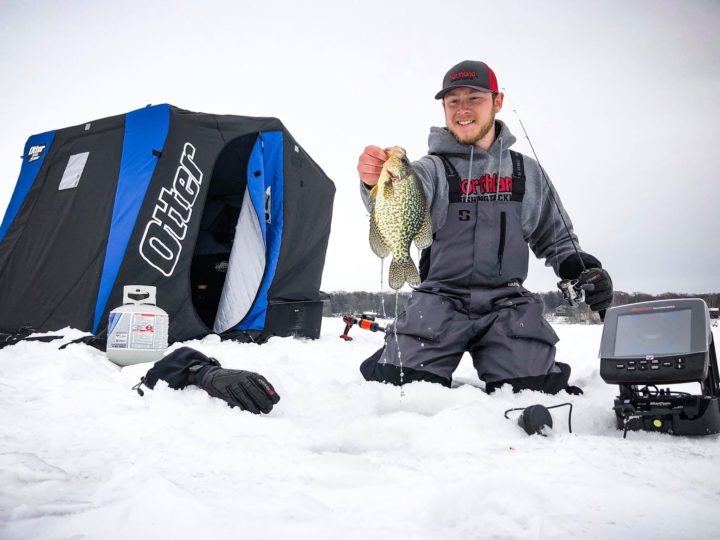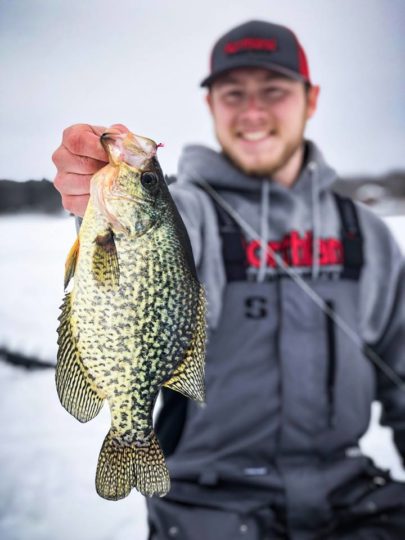
Often nicknamed the “salt and pepper” of our Minnesota lakes, black crappies are one of the most sought-after fish throughout the year, particularly in the winter. By this time of year, crappies have moved from the shallow sunspot pockets and weed lines to the depths of deepwater basins.
A basin is a pocket of deep water surrounded by shallower water and often times off of a hillside of the mainland. Depending on the depth of the basin you intend on fishing, crappies will appear on your electronics anywhere from ¼ to ½ of the way up the water column. This range is what I call the strike zone. The strike zone is where you will find your most active fish, searching for forage. Electronics come in handy this time of year to determine where exactly the crappies are suspended in the water column.

A crucial bait to have tied on this time of year is a tungsten jig. Tungsten is a more dense metal than lead and allows for your jig to get down the water column faster than a lead jig. Getting your bait down to the fish at a faster rate just means that much more of a chance at another bite and keeping the school of crappie active. A favorite tungsten jig of mine to use for deep basin mid-winter crappies is Northland Fishing Tackle’s Mooska Jig. Because of its tungsten and teardrop construction, it gets my bait down to the fish faster and plays a big part in the success of the next catch. Rigging it with waxworms, a crappie minnow, or Impulse plastics, the Mooska Jig is hard to beat for basin crappies!

